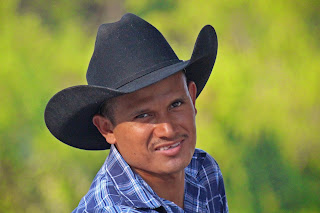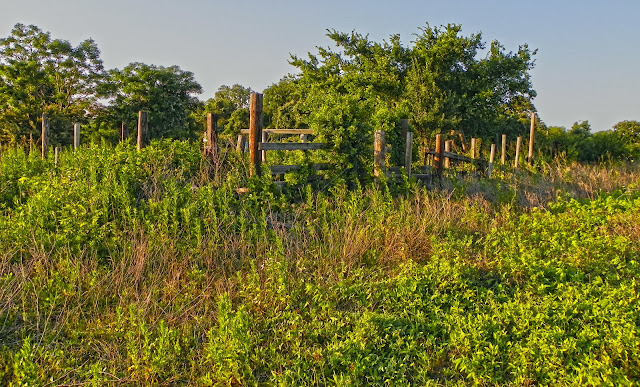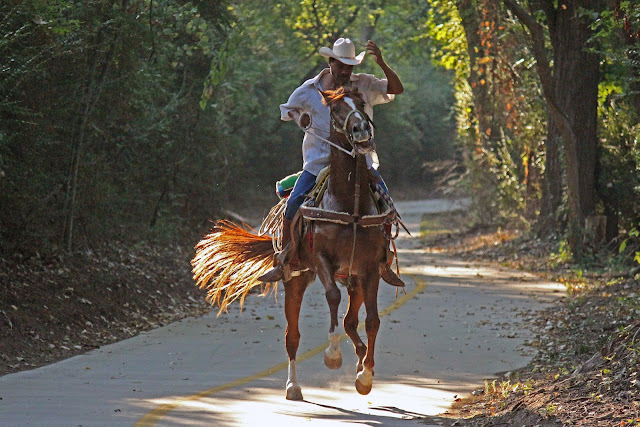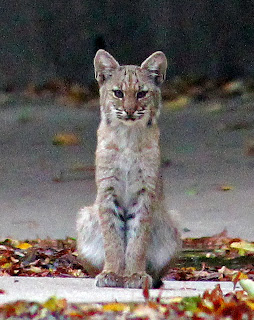Vaqueros of The Great Trinity Forest
 |
| Riding the Trinity River with the best brush cowboys in North Texas, Fall 2013 |
The most obscure but rooted sense of place, by my reckoning in Dallas, must be here. Those who get the notion of the woods down in these parts, the pure authenticity of what remains of a real Texas among ever growing ribbons of concrete, relish this spot. When the heat of the Texas summer loses out to the first couple autumn cold fronts and their brief dust settling rains, well, there are few finer places to be in the world than right here.
 Somewhere between the emerald grass and shining pocket ponds are thirty centuries of mankind at your feet if you know where to look. Texas in the raw you might say of a vanished people leaving behind chalky relics and scattered bones as evidence they were ever here. What the Indians left behind are easy to find, looking for the icon of Texas, a real cowboy, is another story altogether.
Somewhere between the emerald grass and shining pocket ponds are thirty centuries of mankind at your feet if you know where to look. Texas in the raw you might say of a vanished people leaving behind chalky relics and scattered bones as evidence they were ever here. What the Indians left behind are easy to find, looking for the icon of Texas, a real cowboy, is another story altogether.
If one were to seek out a real authentic horse riding cowboy in Texas it might take awhile. Many contemporary cowboys have traded in their horses for pickup trucks, helicopters and ATVs for managing their herds. The dime store cowboys, the wannabees, the all hat no cattle types folded into the mix only confuse what many consider to be one of the noblest of Texas professions.
Other than the NFL team named after the Cowboy, one would be very hard pressed to find one. There is a place though inside the city limits of Dallas, where the oldest cowboy traditions and real cowboy life still thrives. The Great Trinity Forest.
The men here ride in a style that served as a foundation for what we consider modern day western and cowboy life. Their equipment and horses are such that they hail back to a long ago time. Before there was a Texas or a Mexico.
Competent riders on well trained horses who excel at what they do. Busting brush, riding hard and exploring the lost and unexplored parts of the city. It’s almost moving art at work with man and horse working in perfect unison as a team.
I have come to believe that were the vaqueros who ride here not on horseback, they would be known as the best woodsmen of the riverbottoms. Exceptional outdoorsmen and adventurers they are the silent hands that often do trail maintenance, remove downed tree limbs and run off the few bad guys down here.
 These men thrive in the art of making a horse as light and flexible to the rider’s soft touch, as is said today, to work as one. The history, the horsemanship, the gear, the land, the lifestyle remains part of our heritage and is remembered, practiced and celebrated at various rodeos, gatherings and western shows throughout Texas each year. These events showcase the talents of the culture upon which Texas bases so much of itself. Rare to see it in the Texas wildscape though, in the whole where it was first refined.
These men thrive in the art of making a horse as light and flexible to the rider’s soft touch, as is said today, to work as one. The history, the horsemanship, the gear, the land, the lifestyle remains part of our heritage and is remembered, practiced and celebrated at various rodeos, gatherings and western shows throughout Texas each year. These events showcase the talents of the culture upon which Texas bases so much of itself. Rare to see it in the Texas wildscape though, in the whole where it was first refined.
The Texas Cowboy-Vaquero culture was inherited from the Spanish cavalry, who adopted it from the Moors which is thought to have come from Asia, through Egypt, across the deserts of North Africa into Spain, spreading across the seas into North and South America.
When the Spanish introduced horses and cattle to the Americas, large haciendas were established in New Spain. This created a demand for skilled men to rope, ride, control, and protect the animals. The vaquero was born. The word “vaquero” came from the word vaca, the Spanish word for cow. Cowboys often referred to themselves as buckaroos. In Spanish, the “v” is pronounced like a “b,” so vaquero may have evolved into bukero, then finally buckaroo. Charro is another Spanish term that means expert horseman or cowboy. Charro became the cultural construction of maleness to the Spanish settlers. Now a charro is more of a rodeo show style and not practiced as religion in the wild.
At the time 16th Century Texas was a vast yet-to-be discovered land. Infrequent expeditions by the Spanish to explore the Texas interior by expedition made brief contacts with coastal Native American tribes eventually led them to Spanish missionaries who brought horses, cattle and mules to the area.
The background of the vaqueros, the technique, tradition and lore has become legendary around the world. The Tex-Mex vaquero history is one of special significance for it was the beginning of the working cowboy we know today. It is the saga of the early Spanish and Mexican horsemen of Northern Mexico and South Texas.
The intent was to establish a colony with missions governed by Spanish Catholic Dominicans, Jesuits, and Franciscan priests. Of course, much history is documented from that point on as our Texas heritage was forming. During that time the massive herds of free roaming longhorn, cattle, horses, livestock that grazed the lush land were under the mounted vaquero’s watchful eye, skilled in the use of the rawhide riata for sorting, roping to brand, ear mark or when necessary slaughter.

Horses arrived in 1519 in Mexico with Spanish conquistador Hernando Cortes, and cattle soon followed in 1521 with Gregorio de Villalobos. As expeditions moved north transplanting the cattle and horses to the Southwest, the man working the cattle, or the vaquero, became the man on horseback who contributed many of the skills and much of the equipment and rodeo terminology used by the American cowboy. Riding, roping, and branding, along with the rope, saddle, spurs, chaps, and even the word rodeo “roundup” are some of the contributions.
Some areas, particularly in deep South Texas, had the environment conducive to the proliferation of stray cattle and horses. By the 1600s and 1700s Spanish-Mexican settlements and ranches were started in areas around the lower Rio Grande Valley.
Cattle are too fast for unmounted herders and humans on foot do not have the endurance to keep up with cattle on open ranges. Further more cattle herders need some means to stop and control individual animals. The method developed in Mexico for controlling individual animals is lassoing them with a lariat which is secured to the horn of a saddle. This system seems so simple and effective that it is difficult to imagine any other system being used. But it took many decades if not a century or so for this system to be perfected in Mexico.
The vaquero culture developed into a fine art in Texas through the Spanish mission era by the first the Spanish, then followed by Indians, Mexicans, Freedmen and European Settlers – men who upheld the vaquero traditions as in the centerfire saddle, rawhide riata and hackmore.
Many European settlers had a vast knowledge of cattle raising and production in Northern European pastures but were at a loss in the near unlimited free range of Texas. Before the advent of barbed wire and fencing of the range, settlers rapidly adopted the skills of the vaquero and set to tending herd like the Spanish before them. A pure North American invention, the Texas Cowboy further refined the Vaquero with a western style hat, six shot pistol and easier riding saddle for long hours on a horse.
The influx of farmers, immigrants, fences, trains, and small towns contributed to the demise of the cowboy life. Plowing killed off the range, barbed wire limited access to grass and water, and thousands of hands lost jobs when it became cheaper to ship cattle to market by rail. The stories of this lifestyle became legend and a fabric of our very life today as Texans.
The vaquero style still remains in practice today although some variations have been introduced, but many followers hold tight to the foundations of horsemanship in which the Texas vaquero later called the cowboy excelled.
Manuel, Jesus and Junior
 |
| Horses prefer the soft surface to the concrete whenever possible |
The horseback riding style in the photos seen here are of a traditional Mexican style that taps the very roots of early cowboy life. When the Spanish settled present day Mexico, the vast open plains and from the Gulf of Mexico to the mountainous interior were instantly seen as prime cattle country. With near year round grass growth for feed, this open plain area was quickly populated with cattle.
 |
| Manuel and his kids out riding the Great Trinity Forest in 2010 |
 |
| Manuel Sanches |
Most notable among the vaqueros on the Trinity is a friend named Manuel. We have been riding down here in Joppa before the concrete went in, back when the trails were old rustic gravel roads that served fish camps around Lemmon Lake. He is seen above leading his kids on a trail ride in 2010. Manuel hails from that same area of Mexico where the Spanish first raised cattle five centuries ago.
Manuel usually has children in tow teaching horsemanship as he goes through the woods. He is from a part of Mexico where the old ways of cowboy life in North America first started.

Like many, he keeps a “Rancho” in South Dallas. These are not formal ranches but more like small farms where horses can pasture, a good size vegetable crop can be grown and some horse trailers kept. Works out very well and for someone with a career during the week, makes for a great weekend getaway in his free time.
Wearing his trademark half chaps and festooned with various rope and even a blanket he is always ready for whatever awaits him deep in the woods. 
Many would see the riding style on display here as trick riding, a way to show off the way a rider can move a horse.
The truth is, that as we head for the deep privet and heavy timbered woods nearby, that artistic license on exhibition by way of open concrete becomes a very necessary skillset.
At left is Junior, one of Manuel’s family members riding Chapulín. This particular horse is the same as that in the 2010 photos taken down here.
 |
| Chapulín |
Much like the parody tv super hero this horse’s name translates into a kind of grasshopper. Chapulín is a smart horse, slightly stubborn and one of the best mounts on the river for a young person to ride.
Manuel is all about teaching the fine touch of the horse and teaching his family members the subtle art of riding. Wish I had some good photos of how this works in heavy brush which happened right after the photo below was taken. It’s all about letting the horse doing what it feels comfortable with.
 |
| Manuel and Junior |
 |
| Jesus on his horse Lucero |
Jesus is another familiar face in the Great Trinity Forest. He grew up in a ranching family in the mountains above Monterrey.
He is probably the flashiest rider of the dozen others who ride here. A real expert in the saddle. Speaking of saddles, he has some of the best looking saddles, saddle blankets and ropes I have seen.
Those lariats and ropes have removed more deadfall off the trails here than any work crew the city ever hired.
The horse he is riding in the photos this day, is named Lucero, after the famous Spanish singer.
He is often seen here out riding with his wife, who rides a fast quarter horse named Comanche.

Jesus wife is a fan of picking pecans in the fall down here. Sprinkled among the trees bearing small native pecans are a grove of paper shell pecan bearing trees that kick out nuts the size of chicken eggs. One of his horses is seen above, hitched to a pecan near the Trinity Forest Trail Bridge last year.
Jesus is seen at left, from a photo dated October 2011 when Phase II of the Trinity Forest Trail was just about to get a matrix of rebar thrown on it. It was a last hoorah of a ride for all of us before the concrete went in.
 |
| The last big ride on the soft surface trail before it was paved |
Floral Farms and the Pig Park Rodeo
The rodeo tradition and history is intertwined with the land here too. Still known to many as the Pig Park Rodeo the old dilapidated structures that once held amateur rodeo events still stands today. Barely.
 |
| Pig Rodeo Site |
Hashed out of a piece of land between the Union Pacific tracks and the Trinity in the late 1940s, the area has always been on the far fringes of Dallas. It has more in common with rural country living than downtown just a few miles up the road. This area is called Floral Farms after the small flower growing operations here and abundance of native wildflowers every spring.
Floral Farms afforded African American residents a community where they could live in a semi-rural setting and be away from the confines of the highly segregated urban areas at that time. The city eventually bought the homeowners out on a voluntary basis in the 1970s.
 |
| Red Shouldered Hawk |
Unlike Joppa a mile to the north, that sits on a high piece of ground, Floral Farms sits not much higher than the river itself making it potentially flood prone. The removal of homes was done in a half-hearted manner so even 40 years later some structures still stand. Outhouses, sheds and foundations are still visible.
Above is what is left of the Joppa Rodeo Arena. A dilapidated fence marks the boundary of the old arena. In the background are sets of old wooden pens to hold animals used in the rodeo.
The concentric ring you see in the arena is used by current horseback riders for training. Under the weeds, the pillow soft sandy loam of the arena still exists making an ideal place to train a horse.
Old timers in Joppa and far South Dallas speak fondly of the old rodeo here. In the heyday it was a great community gathering place and the sort of locale where much fun was to be had on a Saturday night.
 |
| Old rodeo arena |
Great Trinity Forest Trail
This concrete trail built in two phases sits inside the Joppa Preserve and is part of the Dallas County Open Space Project. Originally this land was part of the Millermore Plantation. The original Miller cabin and the later Greek revival Millermore Mansion are now preserved at Old City Park in Dallas. The area later became known as Joppa and Floral Farms. Both were unincorporated freedman’s communities for many decades without access to running water and city services.
The paved trail now reaches 4.1 miles to connect the Loop 12 Boat Ramp with the Trinity River Audubon Center. The centerpiece of the paved trail here is a multi-million dollar bike bridge that spans the Trinity River just southeast of the Trinity River Audubon Center.
2006
 |
| 2006 |
Most of the concrete down here was one a mighty fine gravel road that was a great all weather surface with decades of well stabilized ballast in place. Many thought that leaving it as a soft surface path rather than concrete would have been a better choice, to keep the rustic feel of the place.
2011
 |
| 2011 |
That changed in 2011 with the construction of Phase II. The three photos here are all taken in the same spot spanning seven years.
2013
 |
| 2013 |
Trinity Trail Bridge Site
| 2010 |
A few years ago, the site of the Trinity Trail Bridge was the most remote part of Dallas. Fixed on an inverted U shape bend in the Trinity, the bridge site sits a few hundred yards upstream of the mouth with Elam Creek. Still remains one of the quietest places in the city.
 |
| 2013 |
 |
| Bobcat cub |
 |
| Bobcat cub left, adult bobcat right October 2013 |
Wildlife is pretty easy to spot down here if one knows where to look. Deer, coyotes and bobcats are a frequent sight.
The Great Trinity Forest is still one of those places that without folks minding their manners becomes a rather lawless part of the county.
 |
| Blocking in illegal ATV riders on the Trinity Forest Trail |
With only a sign or two noting no motorized vehicle access, many abuse the privilege of visiting the woods by taking atvs, 4x4s and passenger vehicles on the concrete trail and beyond.
Hard to get the message across. The folks on the ATVs above were limited in speed only by the governors on their engine at 20mph or so. They told us that they were headed to the Audubon Center trails, which at that late hour on a weekend were closed many hours ago.
At a million dollars a mile in construction costs, sure seems silly not to put up some anti-vehicle posts called bollards and slap some hefty fines on those who tear up the woods with their vehicles. As the city continues it’s love affair with building trails of concrete one would hope that the stern message of no motorized vehicles and law enforcement of ordinances would accompany construction.
It was the combustion engine, barbed wire and high speed transportation that drove the horse out of the everyday Texas vernacular. Let’s not let that happen down here on the Trinity, one of the last great authentic Texan spots left.










